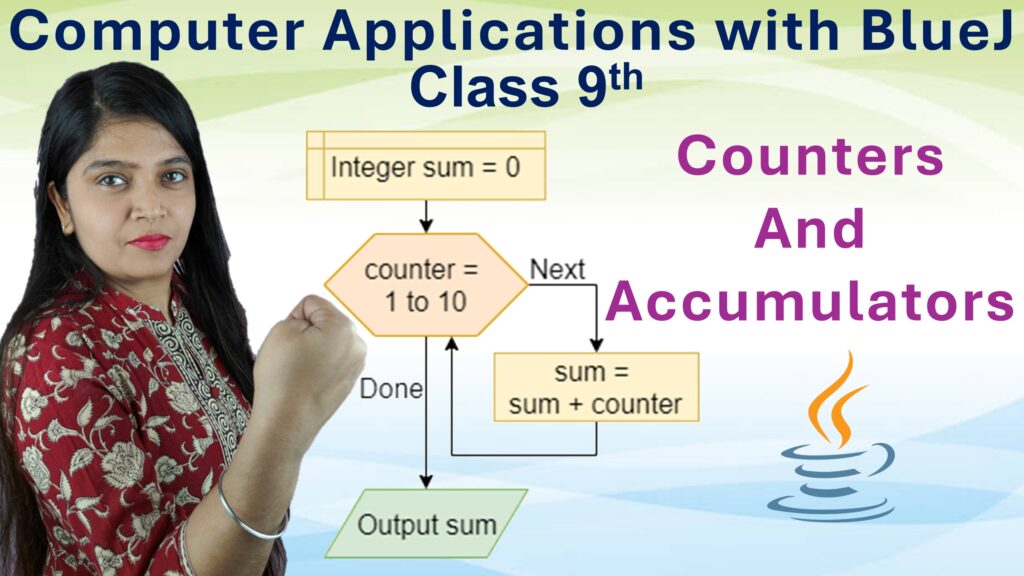Exercise: 1-A
Q1: Multiple Choice Type
i. A number which is not rational is called:
Explanation:
Rational numbers can be expressed in the form \(\frac{p}{q}\), where \(p, q \in \mathbb{Z}\), and \(q \ne 0\).
Numbers that cannot be expressed in this form are called irrational numbers.
Example: \(\sqrt{2}, \pi, e\)
Answer: c. an irrational number
ii. If x ≠ 0 then the value of \(\frac{0}{x}\) is.
Explanation:
\[
\frac{0}{x} = 0 \quad \text{(since anything multiplied with 0 is 0)}
\]
And 0 is a rational number (as \(0 = \frac{0}{1}\))
Answer: a. a rational number
iii. The equation 5x + 7 = 0, gives the value of x which is:
Explanation:
\[
5x + 7 = 0 \Rightarrow 5x = -7 \Rightarrow x = \frac{-7}{5}
\]
\(\frac{-7}{5}\) is a rational number (p/q form)
Answer: c. a rational number
iv. Rational number \(\frac{p}{q}\) is in standard form, if:
Explanation:
Standard form means:
– No common factor between \(p\) and \(q\) (other than 1)
– \(q \ne 0\)
Answer: c. p and q have no common factor and q ≠ 0.
v. The addition of two rational numbers \(\frac{a}{b}\ and\ \frac{c}{d}\) is commutative, if:
Explanation:
Commutative property of addition states:
\[
a + b = b + a
\]
This holds true for rational numbers as well.
Answer: c. \(\frac{a}{b} + \frac{c}{d} = \frac{c}{d} + \frac{a}{b}\)
vi. \(-\frac{3}{7}+\) additive inverse of \(\frac{-3}{7}\) is:
Explanation:
Additive inverse of \(\frac{-3}{7}\) is \(\frac{3}{7}\)
\[
-\frac{3}{7} + \frac{3}{7} = 0
\]
Answer: b. 0
Q2: Add each pair of rational numbers, given below, and show that their addition (sum) is also a rational number:
i. \(\frac{-5}{8}\ and\ \frac{3}{8}\)
\[
\frac{-5}{8} + \frac{3}{8} = \frac{-5 + 3}{8} = \frac{-2}{8} = \frac{-1}{4}
\]
Answer: \(\frac{-1}{4}\) — a rational number
ii. \(\frac{-8}{13}\) and \(\frac{-4}{13}\)
\[
\frac{-8}{13} + \frac{-4}{13} = \frac{-8 – 4}{13} = \frac{-12}{13}
\]
Answer: \(\frac{-12}{13}\) — a rational number
iii. \(\frac{6}{11}\ and\ \frac{-9}{11}\))
\[
\frac{6}{11} + \frac{-9}{11} = \frac{6 – 9}{11} = \frac{-3}{11}
\]
Answer: \(\frac{-3}{11}\) — a rational number
iv. \(\frac{5}{-26}\ and\ \frac{8}{39}\)
Convert \(\frac{5}{-26} = \frac{-5}{26}\)
LCM of 26 and 39 = 78
\[
\frac{-5}{26} = \frac{-15}{78}, \quad \frac{8}{39} = \frac{16}{78}
\]
\[
\frac{-15}{78} + \frac{16}{78} = \frac{1}{78}
\]
Answer: \(\frac{1}{78}\) — a rational number
v. \(\frac{5}{-6}\ and\ \frac{2}{3}\)
Convert \(\frac{5}{-6} = \frac{-5}{6}\)
\[
\frac{-5}{6} + \frac{2}{3} = \frac{-5}{6} + \frac{4}{6} = \frac{-1}{6}
\]
Answer: \(\frac{-1}{6}\) — a rational number
vi. \(2\ and\ \frac{2}{5}\)
\[
-2 + \frac{2}{5} = \frac{-10}{5} + \frac{2}{5} = \frac{-8}{5}
\]
Answer: \(\frac{-8}{5}\) — a rational number
vii. \(\frac{9}{-4}\ and\frac{-3}{8} \)
Convert \(\frac{9}{-4} = \frac{-9}{4}\)
LCM of 4 and 8 = 8
\[
\frac{-9}{4} = \frac{-18}{8}, \quad \frac{-3}{8} = \frac{-3}{8}
\]
\[
\frac{-18}{8} + \frac{-3}{8} = \frac{-21}{8}
\]
Answer: \(\frac{-21}{8}\) — a rational number
viii. \(\frac{7}{-18}\ and\ \frac{8}{27}\)
Convert \(\frac{7}{-18} = \frac{-7}{18}\)
LCM of 18 and 27 = 54
\[
\frac{-7}{18} = \frac{-21}{54}, \quad \frac{8}{27} = \frac{16}{54}
\]
\[
\frac{-21}{54} + \frac{16}{54} = \frac{-5}{54}
\]
Answer: \(\frac{-5}{54}\) — a rational number
Q3: Evaluate
i. \(\frac{5}{9}+\frac{-7}{6}\)
LCM of 9 and 6 = 18
\[
\frac{5}{9} = \frac{10}{18}, \quad \frac{-7}{6} = \frac{-21}{18}
\]
\[
\frac{10}{18} + \frac{-21}{18} = \frac{-11}{18}
\]
Answer: \(\frac{-11}{18}\)
ii. \(4+\frac{3}{-5}\)
Convert \(\frac{3}{-5} = \frac{-3}{5}\)
\[
4 = \frac{20}{5}, \quad \frac{-3}{5} = \frac{-3}{5}
\]
\[
\frac{20}{5} + \frac{-3}{5} = \frac{17}{5}
\]
Answer: \(\frac{17}{5}\)
iii. \(\frac{1}{-15}+\frac{5}{-12}\)
Convert: \(\frac{1}{-15} = \frac{-1}{15},\ \frac{5}{-12} = \frac{-5}{12}\)
LCM of 15 and 12 = 60
\[
\frac{-1}{15} = \frac{-4}{60}, \quad \frac{-5}{12} = \frac{-25}{60}
\]
\[
\frac{-4}{60} + \frac{-25}{60} = \frac{-29}{60}
\]
Answer: \(\frac{-29}{60}\)
iv. \(\frac{5}{9}+\frac{3}{-4}\)
Convert: \(\frac{3}{-4} = \frac{-3}{4}\)
LCM of 9 and 4 = 36
\[
\frac{5}{9} = \frac{20}{36}, \quad \frac{-3}{4} = \frac{-27}{36}
\]
\[
\frac{20}{36} + \frac{-27}{36} = \frac{-7}{36}
\]
Answer: \(\frac{-7}{36}\)
v. \(\frac{-8}{9}+\frac{-5}{12}\)
LCM of 9 and 12 = 36
\[
\frac{-8}{9} = \frac{-32}{36}, \quad \frac{-5}{12} = \frac{-15}{36}
\]
\[
\frac{-32}{36} + \frac{-15}{36} = \frac{-47}{36}
\]
Answer: \(\frac{-47}{36}\)
vi. \(0+\frac{-2}{7}\)
\[
0 + \frac{-2}{7} = \frac{-2}{7}
\]
Answer: \(\frac{-2}{7}\)
vii. \(\frac{5}{-11}+0\)
Convert \(\frac{5}{-11} = \frac{-5}{11}\)
\[
\frac{-5}{11} + 0 = \frac{-5}{11}
\]
Answer: \(\frac{-5}{11}\)
viii. \(2+\frac{-3}{5}\)
\[
2 = \frac{10}{5}, \quad \frac{-3}{5} = \frac{-3}{5}
\]
\[
\frac{10}{5} + \frac{-3}{5} = \frac{7}{5}
\]
Answer: \(\frac{7}{5}\)
ix. \(\frac{4}{-9}+1\)
Convert \(\frac{4}{-9} = \frac{-4}{9}\)
\[
1 = \frac{9}{9}, \quad \frac{-4}{9} + \frac{9}{9} = \frac{5}{9}
\]
Answer: \(\frac{5}{9}\)
Q4: Evaluate
i. \(\frac{3}{7}+\frac{-4}{9}+\frac{-11}{7}+\frac{7}{9}\)
Group same denominators:
\[
\left(\frac{3}{7} + \frac{-11}{7}\right) + \left(\frac{-4}{9} + \frac{7}{9}\right)
\]
\[
= \frac{-8}{7} + \frac{3}{9} = \frac{-8}{7} + \frac{1}{3}
\]
LCM of 7 and 3 = 21
\[
\frac{-8}{7} = \frac{-24}{21}, \quad \frac{1}{3} = \frac{7}{21}
\]
\[
\frac{-24}{21} + \frac{7}{21} = \frac{-17}{21}
\]
Answer: \(\frac{-17}{21}\)
ii. \(\frac{2}{3}+\frac{-4}{5}+\frac{1}{3}+\frac{2}{5}\)
Group like denominators:
\[
\left(\frac{2}{3} + \frac{1}{3}\right) + \left(\frac{-4}{5} + \frac{2}{5}\right)
\]
\[
= \frac{3}{3} + \frac{-2}{5} = 1 + \frac{-2}{5}
\]
\[
= \frac{5}{5} + \frac{-2}{5} = \frac{3}{5}
\]
Answer: \(\frac{3}{5}\)
iii. \(\frac{4}{7}+0+\frac{-8}{9}+\frac{-13}{7}+\frac{17}{9}\)
Group by denominators:
\[
\left(\frac{4}{7} + \frac{-13}{7}\right) + \left(\frac{-8}{9} + \frac{17}{9}\right) + 0
\]
\[
= \frac{-9}{7} + \frac{9}{9} = \frac{-9}{7} + 1
\]
\[
1 = \frac{7}{7}, \quad \frac{-9}{7} + \frac{7}{7} = \frac{-2}{7}
\]
Answer: \(\frac{-2}{7}\)
iv. \(\frac{3}{8}+\frac{-5}{12}+\frac{3}{7}+\frac{3}{12}+\frac{-5}{8}+\frac{-2}{7}\)
Group like denominators:
\[
\left(\frac{3}{8} + \frac{-5}{8}\right) + \left(\frac{-5}{12} + \frac{3}{12}\right) + \left(\frac{3}{7} + \frac{-2}{7}\right)
\]
\[
= \frac{-2}{8} + \frac{-2}{12} + \frac{1}{7}
\]
Simplify: \(\frac{-2}{8} = \frac{-1}{4}, \quad \frac{-2}{12} = \frac{-1}{6}\)
Now add: \(\frac{-1}{4} + \frac{-1}{6} + \frac{1}{7}\)
LCM of 4, 6, 7 = 84
\[
\frac{-1}{4} = \frac{-21}{84}, \quad \frac{-1}{6} = \frac{-14}{84}, \quad \frac{1}{7} = \frac{12}{84}
\]
\[
\frac{-21 -14 + 12}{84} = \frac{-23}{84}
\]
Answer: \(\frac{-23}{84}\)
Q5: For pair of rational numbers, verify the commutative property of addition of rational numbers:
i. \(\frac{-8}{7}\ and\ \frac{5}{14}\)
Check if: \(\frac{-8}{7} + \frac{5}{14} = \frac{5}{14} + \frac{-8}{7}\)
LCM of 7 and 14 = 14
\[
\frac{-8}{7} = \frac{-16}{14}, \quad \frac{-16}{14} + \frac{5}{14} = \frac{-11}{14}
\]
Now reverse order:
\[
\frac{5}{14} + \frac{-8}{7} = \frac{5}{14} + \frac{-16}{14} = \frac{-11}{14}
\]
Property Verified ✅
ii. \(\frac{5}{9}\ and\ \frac{5}{-12}\)
LCM of 9 and 12 = 36
\[
\frac{5}{9} = \frac{20}{36}, \quad \frac{5}{-12} = \frac{-15}{36}
\]
\[
\frac{5}{9} + \frac{5}{-12} = \frac{20}{36} + \frac{-15}{36} = \frac{5}{36}
\]
\[
\frac{5}{-12} + \frac{5}{9} = \frac{-15}{36} + \frac{20}{36} = \frac{5}{36}
\]
Property Verified ✅
iii. \(\frac{-4}{5}\ and\ \frac{-13}{-15}\)
\(\frac{-13}{-15} = \frac{13}{15}\) (negative cancels)
LCM of 5 and 15 = 15
\[
\frac{-4}{5} = \frac{-12}{15}
\]
\[
\frac{-12}{15} + \frac{13}{15} = \frac{1}{15}
\]
\[
\frac{13}{15} + \frac{-12}{15} = \frac{1}{15}
\]
Property Verified ✅
iv. \(\frac{2}{-5}\ and\ \frac{11}{-15}\)
\(\frac{2}{-5} = \frac{-2}{5}, \quad \frac{11}{-15} = \frac{-11}{15}\)
LCM = 15
\[
\frac{-2}{5} = \frac{-6}{15}
\]
\[
\frac{-6}{15} + \frac{-11}{15} = \frac{-17}{15}
\]
\[
\frac{-11}{15} + \frac{-6}{15} = \frac{-17}{15}
\]
Property Verified ✅
v. \(3\ and\ \frac{-2}{7}\)
\[
3 + \frac{-2}{7} = \frac{21}{7} + \frac{-2}{7} = \frac{19}{7}
\]
\[
\frac{-2}{7} + 3 = \frac{-2}{7} + \frac{21}{7} = \frac{19}{7}
\]
Property Verified ✅
vi. \(-2\ and\ \frac{3}{-5}\)
\(\frac{3}{-5} = \frac{-3}{5}\)
\[
-2 + \left(\frac{-3}{5}\right) = \frac{-10}{5} + \frac{-3}{5} = \frac{-13}{5}
\]
\[
\frac{-3}{5} + (-2) = \frac{-3}{5} + \frac{-10}{5} = \frac{-13}{5}
\]
Property Verified ✅
Q6: For each set of rational numbers, given below, verify the associative property of addition of rational numbers:
i. \(\frac{1}{2},\ \frac{2}{3}\ and-\frac{1}{6}\)
Check if: \((\frac{1}{2} + \frac{2}{3}) + (-\frac{1}{6}) = \frac{1}{2} + (\frac{2}{3} + (-\frac{1}{6}))\)
Left Side:
\[
\frac{1}{2} + \frac{2}{3} = \frac{3}{6} + \frac{4}{6} = \frac{7}{6}
\]
\[
\frac{7}{6} + (-\frac{1}{6}) = \frac{6}{6} = 1
\]Riht Side:
\[
\frac{2}{3} + (-\frac{1}{6}) = \frac{4}{6} + (-\frac{1}{6}) = \frac{3}{6} = \frac{1}{2}
\]
\[
\frac{1}{2} + \frac{1}{2} = 1
\]Property Verified ✅
ii. \(\frac{-2}{5},\ \frac{4}{15}\ and\ \frac{-7}{10}\)
Left Side:
\[
\frac{-2}{5} + \frac{4}{15} = \frac{-6}{15} + \frac{4}{15} = \frac{-2}{15}
\]
\[
\frac{-2}{15} + \frac{-7}{10} = \frac{-4}{30} + \frac{-21}{30} = \frac{-25}{30} = \frac{-5}{6}
\]Right Side:
\[
\frac{4}{15} + \frac{-7}{10} = \frac{8}{30} + \frac{-21}{30} = \frac{-13}{30}
\]
\[
\frac{-2}{5} + \frac{-13}{30} = \frac{-12}{30} + \frac{-13}{30} = \frac{-25}{30} = \frac{-5}{6}
\]Property Verified ✅
iii. \(\frac{-7}{9},\ \frac{2}{-3}\ and\ \frac{-5}{18}\)
Left Side:
\[
\frac{-7}{9} + \frac{-2}{3} = \frac{-14}{18} + \frac{-12}{18} = \frac{-26}{18}
\]
\[
\frac{-26}{18} + \frac{-5}{18} = \frac{-31}{18}
\]Right Side:
\[
\frac{-2}{3} + \frac{-5}{18} = \frac{-12}{18} + \frac{-5}{18} = \frac{-17}{18}
\]
\[
\frac{-7}{9} + \frac{-17}{18} = \frac{-14}{18} + \frac{-17}{18} = \frac{-31}{18}
\]Property Verified ✅
iv. \(-1,\ \frac{5}{6}\ and\ \frac{-2}{3}\)
Left Side:
\[
-1 + \frac{5}{6} = \frac{-6}{6} + \frac{5}{6} = \frac{-1}{6}
\]
\[
\frac{-1}{6} + \frac{-2}{3} = \frac{-1}{6} + \frac{-4}{6} = \frac{-5}{6}
\]Right Side:
\[
\frac{5}{6} + \frac{-2}{3} = \frac{5}{6} + \frac{-4}{6} = \frac{1}{6}
\]
\[
-1 + \frac{1}{6} = \frac{-6}{6} + \frac{1}{6} = \frac{-5}{6}
\]Property Verified ✅
Q7: Write he additive inverse (negative) of:
i. \(\frac{-3}{8}\)
The additive inverse of a number is the number which when added gives 0.
So, we need a number such that:
\[
\frac{-3}{8} + x = 0 \Rightarrow x = \frac{3}{8}
\]
Answer: \(\frac{3}{8}\)
ii. \(\frac{4}{-9}\)
\(\frac{4}{-9} = -\frac{4}{9}\), so its additive inverse is:
\[
-\frac{4}{9} + x = 0 \Rightarrow x = \frac{4}{9}
\]
Answer: \(\frac{4}{9}\)
iii. \(\frac{-4}{-13}\)
\(\frac{-4}{-13} = \frac{4}{13}\), because negative sign cancels out.
So, the additive inverse is:
\[
\frac{4}{13} + x = 0 \Rightarrow x = -\frac{4}{13}
\]
Answer: \(-\frac{4}{13}\)
iv. 0
\[
0 + 0 = 0
\]
Answer: 0 (Additive inverse of 0 is 0 itself)
v. -2
\[
-2 + x = 0 \Rightarrow x = 2
\]
Answer: 2
vi. 1
\[
1 + x = 0 \Rightarrow x = -1
\]
Answer: -1
Q8: Fill in the blanks
i. Additive inverse of \(\frac{-5}{-12}\) = __________
\[
\frac{-5}{-12} = \frac{5}{12} \quad \text{(negative sign cancels out)}
\]
So, its additive inverse is:
\[
-\frac{5}{12}
\]
Answer: \(-\frac{5}{12}\)
ii. \(\frac{-5}{-12}+\) its additive inverse = __________
\[
\frac{-5}{-12} + (-\frac{5}{12}) = \frac{5}{12} + (-\frac{5}{12}) = 0
\]
Answer: 0
iii. If \(\frac{a}{b}\) is additive inverse of \(\frac{-c}{d}\), then \(\frac{-c}{d}\) is additive inverse of _________.
Additive inverse works both ways:
\[
\frac{a}{b} = -\left(\frac{-c}{d}\right) = \frac{c}{d} \Rightarrow \frac{-c}{d} \text{ is additive inverse of } \frac{a}{b}
\]
Answer: \(\frac{a}{b}\)
iv. And, so \(\frac{a}{b}+\frac{\left(-c\right)}{d}=\frac{(-c)}{d}+\frac{a}{b}=\)__________
If they are additive inverses:
\[
\frac{a}{b} + \frac{-c}{d} = 0 \quad \text{and} \quad \frac{-c}{d} + \frac{a}{b} = 0
\]
Answer: 0
Q9: State, true or false:
i. \(\frac{7}{9}=\frac{7+5}{9+5}\)
LHS: \(\frac{7}{9}\)
RHS: \(\frac{12}{14}\)
\[
\frac{7}{9} \neq \frac{12}{14}
\]
Answer: False
ii. \(\frac{7}{9}=\frac{7-5}{9-5}\)
LHS: \(\frac{7}{9}\)
RHS: \(\frac{2}{4} = \frac{1}{2}\)
\[
\frac{7}{9} \neq \frac{1}{2}
\]
Answer: False
iii. \(\frac{7}{9}=\frac{7\times5}{9\times5}\)
RHS: \(\frac{35}{45}\), which simplifies:
\[
\frac{35}{45} = \frac{7}{9}
\]
So, both sides are equal.
Answer: True
iv. \(\frac{7}{9}=\frac{7\div5}{9\div5}\)
RHS: \(\frac{7 \div 5}{9 \div 5} = \frac{7/5}{9/5} = \frac{7}{9}\)
So, both sides are equal.
Answer: True
v. \(\frac{-5}{-12}\) is a negative rational number
\[
\frac{-5}{-12} = \frac{5}{12} \quad \text{(negative sign cancels out)}
\]
This is a positive rational number.
Answer: False
vi. \(\frac{-13}{25}\) is smaller than \(\frac{-25}{13}\).
Compare: \(\frac{-13}{25} \approx -0.52\), \(\frac{-25}{13} \approx -1.92\)
\[
-0.52 > -1.92
\Rightarrow \frac{-13}{25} \text{ is greater than } \frac{-25}{13}
\]
Answer: False
Q10: The weight of an empty fruit basket is \(2\frac{1}{3}\) kg. It contains \(5\frac{5}{6}\) kg grapes and \(8\frac{3}{8}\) kg mangoes. Find the total weight of basket with fruits.
Step 1: Convert mixed numbers to improper fractions
\[
2\frac{1}{3} = \frac{2 \times 3 + 1}{3} = \frac{7}{3}
\]
\[
5\frac{5}{6} = \frac{5 \times 6 + 5}{6} = \frac{35}{6}
\]
\[
8\frac{3}{8} = \frac{8 \times 8 + 3}{8} = \frac{67}{8}
\]Step 2: Add all three rational numbers
\[
\text{Total weight} = \frac{7}{3} + \frac{35}{6} + \frac{67}{8}
\]Step 3: Find LCM of denominators 3, 6, and 8
\[
\text{LCM}(3,6,8) = 24
\]Step 4: Convert to like denominators
\[
\frac{7}{3} = \frac{7 \times 8}{3 \times 8} = \frac{56}{24}
\]
\[
\frac{35}{6} = \frac{35 \times 4}{6 \times 4} = \frac{140}{24}
\]
\[
\frac{67}{8} = \frac{67 \times 3}{8 \times 3} = \frac{201}{24}
\]
Step 5: Add all converted fractions
\[
\frac{56}{24} + \frac{140}{24} + \frac{201}{24} = \frac{397}{24}
\]
Step 6: Convert improper fraction to mixed number
\[
\frac{397}{24} = 16 \text{ remainder } 13 = 16\frac{13}{24}
\]Answer: The total weight of the basket with fruits is \(16\frac{13}{24}\) kg







Leave a Comment